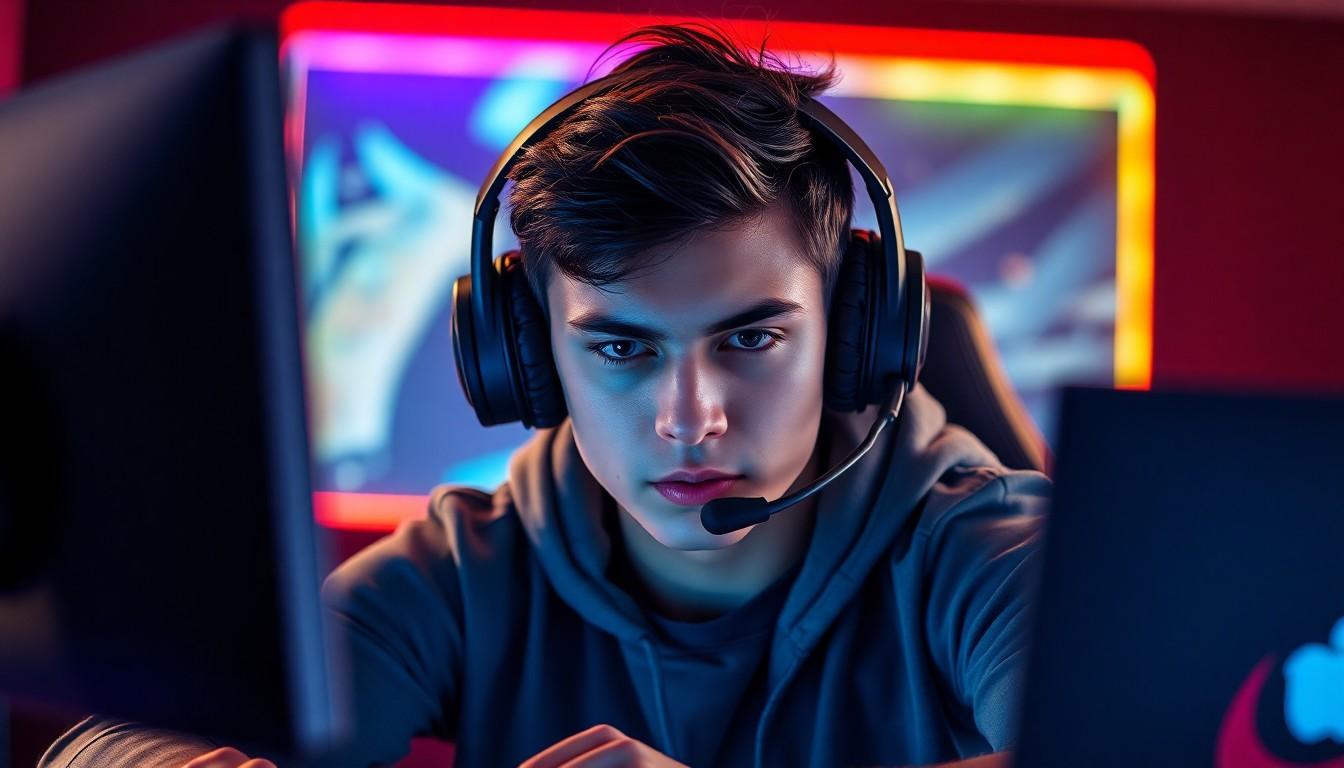In the vibrant world of Fortnite, where dance moves rival combat skills, understanding the typical gamer rank can feel like deciphering a secret code. Gamers drop into the island not just for the thrill of the battle but to climb the ranks and prove they’re more than just a casual player. So what’s the scoop on where most players land in this chaotic, colorful universe?
Typical Gamer Rank in Fortnite
Fortnite ranks categorize players based on their skill level and competitive performance. Players progress through a series of ranks, each indicating their proficiency in various game modes, including Solo, Duos, and Squads.
Typically, ranks include Bronze, Silver, Gold, Platinum, Diamond, and Champion. Bronze ranks often encompass newer players still grasping game mechanics. Silver denotes players with basic skills who can sometimes secure top placements in matches. Gold players demonstrate a solid understanding of strategies and often coordinate effectively with teammates.
Platinum and Diamond ranks showcase advanced players, proficient in building and editing techniques while maintaining situational awareness. Champions represent the top tier of players, consistently achieving high placements and accumulating significant points throughout the season.
Competitive rank points contribute to a player’s overall rank progression. Players must earn points by performing well in matches, such as achieving eliminations and placing in the top spots. The ranking system emphasizes consistency; success in multiple matches improves the overall rank.
Understanding this ranking structure provides insight into the competitive landscape. It reflects not just individual player skill, but also teamwork and game strategy. With constant updates and seasonal changes, players must adapt their gameplay to maintain their ranks, highlighting the game’s dynamic nature.
Typical Gamer Rank In Fortnite
In Fortnite, the typical gamer rank reflects players’ skill levels and competitive performance. It categorizes individuals from novices to seasoned experts.
Definition Of Typical Gamer Rank
A typical gamer rank in Fortnite signifies skill proficiency within the game. Bronze ranks indicate entry-level abilities, while Silver and Gold ranks demonstrate improved strategies and gameplay. Higher ranks, such as Platinum and Diamond, showcase advanced techniques and a deeper understanding of game mechanics. Champion ranks represent the elite players who compete at the highest levels. Each rank showcases the growth of a player’s skills over time, marking significant milestones in their gaming journey.
Factors Affecting Rank
Several factors influence a player’s rank in Fortnite. Performance in matches plays a crucial role; consistent high placements and eliminations lead to rank point gains. Teamwork significantly impacts success; effective communication and coordination with teammates can enhance overall performance. Adaptability to updates and seasonal changes also matters; players who adjust strategies based on new game features or meta shifts often improve their rank. Lastly, frequency of play affects rank progression; more experienced players typically climb ranks faster due to accumulated knowledge and skill refinement over time.
Comparison With Other Player Ranks
Comparing typical gamer ranks in Fortnite reveals significant insights into player skill levels and matchmaking dynamics. Understanding these aspects helps players gauge their performance and expectations in matches.
Skill Levels And Rank Distribution
Skill levels align closely with rank distribution in Fortnite. Bronze ranks, representing roughly 20% of players, indicate beginners developing their abilities. Silver ranks encompass another 20%, showcasing players who have grasped basic strategies. Gold ranks, covering about 25%, reflect solid gameplay and strategy application. Platinum and Diamond ranks represent the top 30% of players, with players in these tiers demonstrating high-level techniques and adaptability. The Champion rank, held by the elite 5%, showcases the pinnacle of skill in Fortnite. This distribution underscores the gradual progression from novice to expert, emphasizing the evolving skill set required to excel.
Matchmaking Implications
Matchmaking in Fortnite directly correlates with player ranks. Players face opponents of similar ranks, ensuring balanced competition. This system enhances the gaming experience and encourages improvement. Lower-ranked players often encounter others within their skill bracket, providing opportunities for growth. Higher-ranked players, in contrast, face those with exceptional skills, promoting intense matches. Successful performance leads to rank progression, while poor results may cause declines. Understanding this dynamic motivates players to refine strategies and adapt their playstyles, making continuous improvement crucial to climbing the ranks efficiently.
Strategies To Improve Rank
Improving rank in Fortnite requires a blend of strategy and skill. Players should focus on honing their building techniques. Mastering construction can significantly enhance both defense and offense during encounters.
Practicing aim with training maps is crucial. Aim training allows players to refine their shooting precision. Engaging in creative mode provides an excellent environment for this kind of practice.
Teamwork plays a vital role. Coordinating actions with teammates can lead to better performance in Duos and Squads. Establishing clear communication helps to strategize effectively during matches.
Analyzing gameplay can also facilitate improvement. Reviewing replays allows players to identify mistakes and learn from them. Recognizing patterns in enemy behavior offers insights into effective counter-strategies.
Adaptability is essential for success. Players must stay updated on game changes and seasonal updates. Adjusting strategies based on current meta trends ensures they remain competitive.
Focus on positioning as well. Good positioning during fights increases the chances of survival and success. Identifying advantageous locations on the map can turn the tide in engagements.
Players should also prioritize consistency over frequency. Regularly playing at peak performance contributes to gradual rank improvement. Earning competitive rank points through solid match performance reinforces this concept.
Participating in tournaments can offer additional opportunities for growth. Competitive events expose players to higher skill levels. Competing against stronger opponents helps refine strategies and improves overall gameplay.
Finally, maintaining a positive mindset is crucial. Players should approach each match with a focus on learning. Emphasizing growth over simply winning fosters a more enjoyable experience in the game.
Understanding the typical gamer rank in Fortnite provides valuable insights into the game’s competitive nature. Each rank not only reflects a player’s skill level but also highlights the dedication and strategy required to progress. Players aiming for higher ranks must adapt to the evolving gameplay and consistently refine their techniques.
As they climb the ranks from Bronze to Champion, the journey becomes a testament to their commitment and growth. Engaging in practice and embracing teamwork can significantly enhance their performance. Ultimately, the ranking system fosters a dynamic environment where players are motivated to improve and enjoy the thrilling challenges that Fortnite offers.


